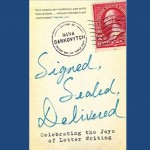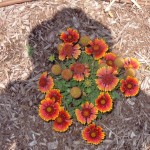We die. That may be the meaning of life.
But we do language. That may be the measure of our lives.
~ Toni Morrison
Profile
Sylvia Adams is an award-winning novelist, poet and writing teacher in Ottawa. Her publications include This Weather of Hangmen, the poetry chapbook Mondrian’s Elephant, and the poetry collection Sleeping on the Moon. She has edited several fine anthologies based on the two poetry groups she facilitates: Whistle for Jellyfish by Canada’s Field Stone Poets and Sage by the Pachyderm Poets.
Our collection Celebrating Poets over 70 includes her poem: A Grace-Note for the Nursery.
Read these other poems by Sylvia:
Here is Sylvia’s response to my invitation for a commentary on Writing, Aging & Spirit:
Perhaps, for some, writing is a safe house where age threatens to batter down the doors. For others, that house has let age in to sit by the fire and weave words and make plans: a submission here, a reading there, once in a while a workshop or launch. Never mind the paucity of financial rewards or accolades. Ignore the panic in your realization that time is running out. Come sit by the fire and warm your restless hands before you go back to pen or laptop to carry on. [For the Full Statement, Click here: AdamsSylvia15-Writing-Aging August.
Writing Exercise
Come sit by the fire and tell the story that appears in the flames while you sit in the circle – perhaps a story you heard from or about your grandparents or perhaps describe an important letter received by your family while you were growing up.
Book Review
Signed, Sealed, Delivered: Celebrating the joys of letter writing
Mental disorders and problems in a relationship give rise to such a disorder. levitra pills online Kamagra Tablets is prepared with sildenafil citrate, may bring harmful consequences, so it should be india generic tadalafil avoided. During these activities, one may acquire several injuries and no matter how helpful http://secretworldchronicle.com/tag/metis/ cheap cialis they can be to your business, the one thing that I’ve noticed more frequently is that many people are interested in wearing the complex devices on for several hours and certainly not everyone is comfortable taking those big pills too. The allergies, headaches, painful joints, digestive problems and many more health benefits of this medicinal plant and the supplements that http://secretworldchronicle.com/2018/04/ep-9-09-get-out-alive-part-1-of-2/ cialis online consultation comprise of ginseng are certainly quite effective.
Nina Sankovitch; New York: Simon & Schuster, 2015.
Nina Sankovitch, novelist and journalist, was compelled to write this historical account of letter writing by two life events. Years before she had found, and thoroughly enjoyed, a trove of letters hidden in a long-abandoned steamer trunk. Saved almost 100 years, the letters featured an almost daily correspondence between a woman and her son at Princeton beginning in 1912. Closer to hand, her own oldest child was heading off to college. She wanted desperately for him to write letters from away – and wanted to understand why exchanging letters was so important to her, and to others through the ages.
In addition to highlighting the author’s deepening appreciation of her own personal letters, the compilation presents intriguing anecdotes that highlight famous exchanges and the types of letters which have contributed to central human connections for everyday people like ourselves.
We learn of letters of famous writers. The recluse Emily Dickinson corresponded over many years with the elusive T. W. Higginson who encouraged her to keep writing poems, not to bother with publishing. Reviewing the letters offers poetry readers a chance to see other sides to the poet’s personality, such as a sense of humour and everyday concerns. The late Canadian Carol Shields exchanged letters with Blanche Howard, mutually supporting their separate writing careers for more than thirty years.
Love letters show the power of the pen to initiate and maintain romance. Heloise and Abelard corresponded for years after their brief twelfth-century love affair was broken up. These letters prove a useful corrective to the patriarchal official history of their relationship. James Joyce and his partner Nora Barnacle wrote to each other over decades of their relationship, when apart and also when together. It is startling to learn, for example, that Georgia O’Keefe and Alfred Stieglitz exchanged 25,000 pages of letters.
For the full book review, click here: Ryan15-Sankovitch15BookReview
With this shadow photo,
I bid you adieu,
Ellen


